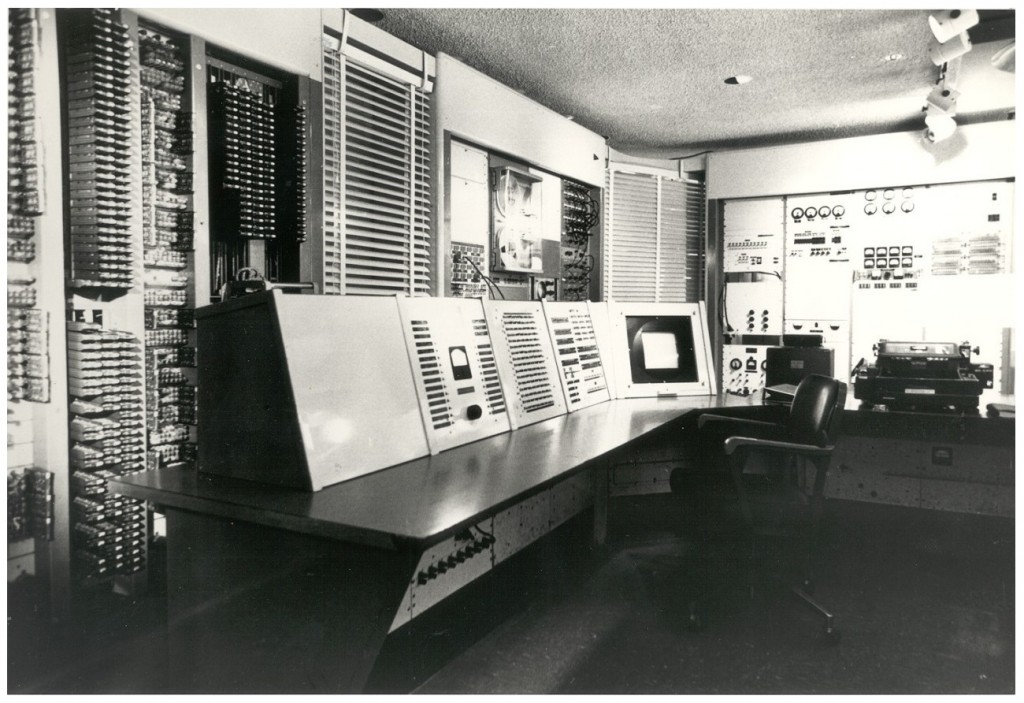Click here: A Brief History of the Computer With Timeline(1614 -1890).
Click here: Computer History With Timeline(1900 – 1946).
1947 – John Bardeen, Walter Houser Brattain, and William Bradford Shockley of Bell Laboratories invented the transistor. They discovered how to make an electric switch with solid materials and no need for a vacuum.
1948 – Frederic C. Williams, Tom Kilburn and Geoff Tootill build the world’s first stored-program electronic computer called Baby, actually named as Manchester Small-Scale Experimental Machine (SSEM) at the Victoria University of Manchester. It contains all of the elements essential to a modern electronic computer.
1949 – The first computer company was the Electronic Controls Company later renamed as Eckert-Mauchly Computer Corporation(EMCC) was founded by J. Presper Eckert and John Mauchly, the same individuals who helped create the ENIAC computer and released a series of mainframe computers under the UNIVAC name.
1950 – Built by the Remington Rand corporation and designed by Engineering Research Associates (ERA), UNIVAC 1101, or ERA 1101 was the first stored-program computer in the U.S. that was moved from its site of manufacture and successfully installed at a distant site.
And around 1950, the era of analog computers started to end with the evolution of digital computers
1951 – As soon as the SSEM had demonstrated the feasibility of its design, a project was initiated at the Victoria University of Manchester to develop it into a more usable computer, the Manchester Mark 1. The Mark 1 in turn quickly became the prototype for the Ferranti Mark 1, the world’s first commercially available general-purpose computer, Built by Ferranti. It used to run a program to search for Mersenne primes for nine hours without error.
In the same year, LEO I (Lyons Electronic Office I) was the first computer used for regular routine office computer job or for commercial business applications.

1952 – Geoffrey W.A. Dummer, a Radar Scientist in Royal Radar Establishment of the Ministry of Defence, is the first person to conceptualise and build a prototype of the integrated circuit, commonly called the microchip.
1959 – Grace Hopper develops the first computer language, COBOL (COmmon Business-Oriented Language). It was an extension of Hopper’s FLOW-MATIC language and COMTRAN (COMmercial TRANslator) a programming language developed at IBM.
1953 – On April 7, 1953 IBM publicly introduced its first commercial scientific computer 701. Thomas Watson visited 20 companies that were potential customers to buy before the development of product, he expected to get orders for five machines, but he got 18 orders.
1954 – John W. Backus submitted a proposal to his superiors at IBM to develop the FORTRAN programming language a more practical alternative to assembly language for programming IBM 704 mainframe computer.
1954 – Toshiba introduces its first computer, the “TAC” digital computer.
From 1955 onwards transistors replaced vacuum tubes in computer designs, giving rise to the “second generation” of computers. They are smaller, require less power , have longer life and can contain tens of thousand of binary circuits then Vacuum tubes.
1955 – MIT Servomechanisms Laboratory introduced Whirlwind machine, the first digital computer which uses magnetic core RAM, real-time graphics and was non replaceable with mechanical systems.
1956 – The TX-0 (Transistorized Experimental computer zero ) is a 16-bit computer and the first transistorized computer to be demonstrated at the Massachusetts Institute of Technology.



1958 – Jack Kilby of Texas Instruments and Robert Noyce of Fairchild Semiconductor invented the first practical integrated circuit by researching on integrated circuit and filed patent on February 6, 1959.
1958 – NEC introduced “NEAC 1101”, Japan’s first computer to use floating point operations and was designed by Eiichi Goto.
1960 – The Digital Equipment Corporation released its first of PDP computer series, the PDP-1 at MIT Lincoln Laboratory and delivered to Bolt, Beranek and Newman(BBN). Steve Russell,an American computer scientist used PDP-1 as hardware for creating Spacewar! the first game on a minicomputer in the history.
1968 – Douglas Engelbart an computer and Internet pioneer, presented a 90 minute live public demonstration by showing a prototype of the modern computer, with a mouse, a graphical user interface (GUI), hypertext,object addressing, dynamic file linking,shared-screen communication over a network with audio and video interface with two persons at different sites.This marks the evolution of the computer from a specialized machine for scientists and mathematicians to technology that is more accessible to the general public.
1968 – Hewlett Packard began marketing the first mass-marketed PC and the first desktop computer, more look like programmable calculator the HP 9100A.



Continue reading >> Computer History With Timeline(1970 – 1979)
Leave a Reply